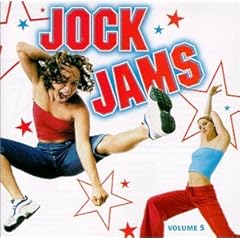
Do you enjoy the murder mystery of Clue but yearn for the impossible assembly of Mousetrap? Have you ever said to yourself, why, I really enjoy this board game but I find the simple construction a bit lacking? Perhaps you fancy yourself the type who enjoys poring over 248-step instruction manuals, wishing for more detailed descriptions?
For some people, the journey is more important than the destination. These are the people you see out there now as adults scouring Ikea for the most complicated Splorgerfläts and Hoüfengloubers they can find, if only for the extensive diagrammed wordless instruction packets. They are still out there, looking for their next cheap assembly-induced thrill.
Who says children's games need to be simple? I say sucks to your Hi-Ho Cherry-O and Candyland. I'm talking about something here for our die-hard fans of never-ending, plot-twisting, perpetual board games like Monopoly or Risk. Something that comes with an instructional manual so long that it will make your eyes cross and your brain go numb. Now, if only there was a board game somewhere out there that was equally complicated to the aforementioned interminable bemusement but could be completed in full in roughly a quarter of the time.
13 Dead End Drive was one of these games, and it was gloriously, inimitably complex. In fact, it often required a set-up time nearly as long as the average gameplay. For patient children, however, there was great payoff. For those of us persistent enough to make it through the instruction novella, there was a hefty reward of secret passageways, booby traps, and the aspiration of hanging your character's portrait over the coveted mansion mantelplace.
There's nothing like a children's game with honesty. Kids have all sorts of day-to-day educational exposure from which to garner important if somewhat inapplicable moral lessons. Sometimes, what kids really need is the brutal truth about the way our world works. 13 Dead End Drive was able to fill that void of cynical realism for the under-12 set. The premise of the game centered around a wealthy heirless woman named Agatha whose death had prompted all those who knew her to emerge from the woodwork in hopes of getting their money-grubbing paws on her fortune. Why sugarcoat it? Kids should know it's a cold, cruel world out there, and if they can just obtain the good favor of a wealthy recluse they can undeservedly inherit her hard-earned cash. Nothing wrong with that, right?
For those of you who do not remember the game in all its complexities, I seek to remind you of its intricacies with the following board set-up diagram:

Still not convinced? Here are a couple of close-ups:



If you can't deduce the major aims of the game from those diagrams alone, here's a brief rundown. I'll try to keep it short to keep your head from spinning. At the start of the game, each player picks several cards featuring their assumed character identities. In a large gilt frame above the mansion's fireplace hangs an ever-changing painting featuring the likeness of one of Aunt Agatha's favorites to inherit her millions. While escaping the mansion with one of your characters' portraits displayed in the frame was a way to win and end the game, during the regular course of play it generally meant that everyone else was trying to kill you. Each player could move the game piece of his or her choosing on a given turn, regardless of to whom that character actually belonged. While there are numerous ways in which to emerge victorious, in its most simplified version you were trying to get your character out of this deathtrap safely while displayed as the favorite, end as the sole living potential heir, or go the more honest route and let the detective sort it out while your picture was in the top spot.
Sound confusing? Certainly! Did your eyes glaze over as you found yourself skimming and scrolling down past even that most concise of explanations of the game's rules? Of course! Now, imagine instructions five times as long and twelve times as complex as the preceding paragraph. Also, it was directed at children 8-12. We can only assume that as children, we had far more perseverance and commitment to finish the job than as lazy, web-browsing adults.
It was certainly cool (if a tad cruel) to beam your opponent's game piece on the head with a falling chandelier or a faultily-assembled suit of armor, but these intricate apparatuses don't build themselves. I dare you to check out the assembly instructions and emerge from your reading confident that you when where to attach pieces A-V. The instruction booklet is slightly contradictory in describing its "easy assembly" just briefly before the phrase "Then snap-fit the trigger (J) onto the beam. also inserting its V-shaped tab into the rod’s slot. See Figure 6B. Hook the small rubber band over the trigger and rod in the notches as shown in figure 6C." Simple, yes?
At least once it was put together, you got to lure your unsuspecting fellow players into well-set mansion traps and bludgeon them to death with all sorts of dangerous fare. There were also innumerable ways in which to be utterly and unapologetically deceitful. You could make use of the secret passageways to push other players into the line of fire. You could also mislead your playmates by strategically choosing to move your own characters into a dangerous area, only to divert their attention from the wicked trap you were springing on one of their guys. In short, the game was endless fun but taught a series of skills more at home in a seedy poker hall than a basement rec room.
Summarily, the game was undoubtedly entertaining but morally bankrupt. At least we could possibly learn a thing or two about construction from putting the thing together. Kids these days would never be that patient and painstaking in their quest for board gaming fun. Right?
Wrong. There was actually a follow-up game entitled "1313 Dead End Drive" released in 2002. I assume their creative department was on break when that name got passed. Instead of 12 potential heirs, the new version includes a frightening 16. In this version, you also get to straight up steal bags of money, cleverly referred to as "moneybags". Reviews of this new version on boardgamegeek.com have such colorful titles as "Light, Fun, Brutal Game" and "Kill, Kill, Kill!", if that gives settles any doubts you may have had about the new game's nature.

Milton Bradley had it wrong. The game was solid enough in its original form. As too often happens with sequels, flashy gimmicks replace the substance we once reveled in. Then again, who am I to rain on today's kids' bout of light, brutal fun? You can purchase the old or new version and decide for yourself.
And for those of you who have graduated to an Ikea-level of assembly expertise, feel free to use the Swedish version of the rules.



















